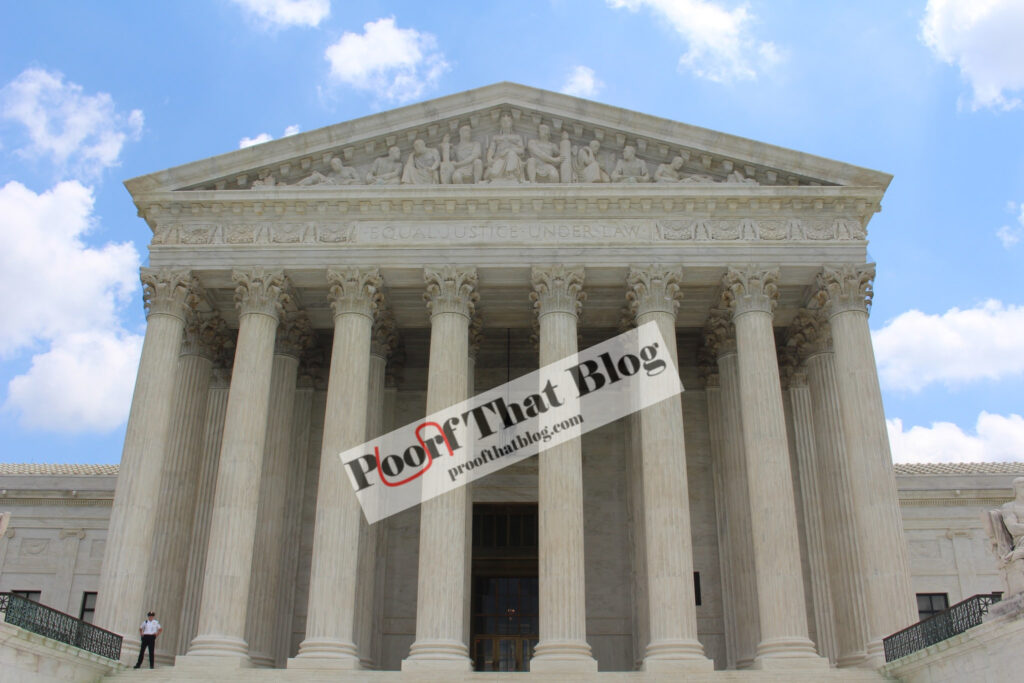Proofreading is everyone’s responsibility. I wondered how often a judge actually makes an error. Unfortunately for judges, I’m pretty sure any error they make is immediately made known and picked up by every legal news source in the country. So be thankful that unless your error is egregious or it is a slow news day, it may not be spread so far and wide!

We’ll start with the U.S. Supreme Court and some examples of errors made. Apparently, there is a website that publishes the corrections that the U.S. Supreme Court has made to correct misspellings, wrong word choices, missing words, and grammatical missteps in Supreme Court opinions. This term, according to the National Law Journal in this ABA Journal article and this Above The Law article, they include:
- The word “palate” in the phrase “painter’s palate” was corrected to “palette” in a concurrence by Justice Clarence Thomas in Masterpiece Cakeshop v. Colorado Civil Rights Commission.
- The phrase “lassez-faire” in an opinion by Justice Stephen G. Breyer in Ohio v. American Express was corrected to “laissez-faire.”
- The word “against” was inserted after “protects” in a sentence describing Colorado’s anti-discrimination law. The original sentence in the Masterpiece Cakeshop decision referred to “a law that protects discrimination on the basis of religion as well as sexual orientation.”
- A problem with subject-verb agreement in a concurrence by Justice Sonia Sotomayor was corrected in Hughes v. United States. The first version of the opinion read, “The integrity and legitimacy of our criminal justice system depends upon consistency.” The word “depend” was substituted for “depends.”
- “The Judicial Power of the United States” was changed to “[t]he judicial Power of the United States” in Samuel Alito’s dissent in Ortiz v. United States, since that’s how it’s written in original Constitution.
- In Jesner v. United States, Justice Kennedy incorrectly described the facts of Filártiga v. Peña-Irala, mixing Paraguay with Peru.
As much as Court watchers like to point out mistakes, sometimes the U.S. Supreme Court stands by its choices. The word “miniscule” in Justice Stephen G. Breyer’s dissent in Trump v. Hawaii was unchanged. Some think the word should be “minuscule” while others disagree, saying that “miniscule” isn’t the preferred word, but it’s not wrong.
In other courts, sometimes judges or law clerks insert reminders for things they need to follow up on and sometimes those reminders don’t get taken care of. The same can happen in any law office. This is one reason I try to highlight those notes as I see them so that as someone is scrolling through, at least it should make them slow down to see why something is highlighted. U.S. District Judge Gonzalo Curiel filed an opinion on a Motion to Dismiss with what Above the Law describes as “an uncomfortably honest assessment of the underlying research.”

Sometimes the error is not related to spelling or sentence construction, but is an error in numbers. Recently, an Oklahoma judge admitted that he made a $107 million math error in an order for Johnson & Johnson to pay $572 million in the opioid epidemic. The portion of the award devoted to a treatment program for addicted babies should have been $107,683, but in the order said $107,683,000. What’s a few zeroes between friends, eh? The number will be changed in the next version of the order.
Just know that errors happen to everyone but good proofreading skills will hopefully make those errors less likely to happen.


 Follow
Follow